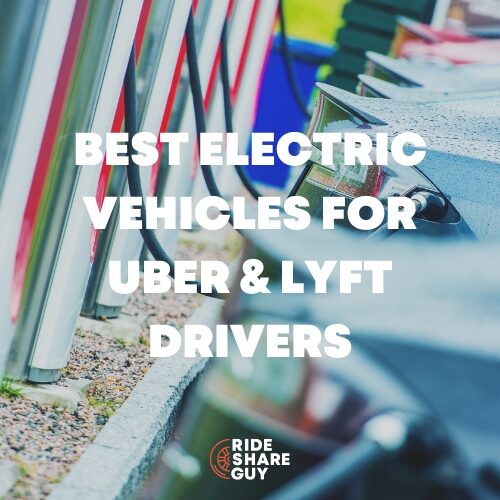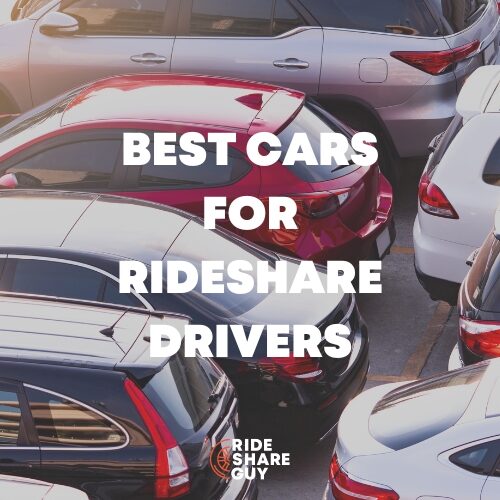With Tesla’s market cap cresting one trillion (that’s trillion with a “T”), electric vehicles are a hot topic these days. At some point, we’re probably all going to be driving them, but what if you want to do it now?
The RSG “Uber and Lyft EV Drivers” group on Facebook gets lots of inquiries from EV-curious drivers who seem worried doing rideshare work with an EV would be inconvenient, uneconomical or just plain impossible. Group Moderator and Auto Expert Gabe Ets-Hokin breaks it down for us.
Range Anxiety is the fear that an electric vehicle won’t have sufficient range—or recharge quickly enough—for convenient, effective everyday use.
The most expensive EV you can buy today, the $139,000 Lucid Air Grand Touring, offers 516 miles of range and can add 300 miles of range in just 20 minutes of charging.
Contrast that with the 2017 Kia Niro I just bought for under $20,000. It has a similar range and can “recharge” for another 500-plus miles of moneymaking in about five minutes or so.
I experience plenty of anxieties when I drive my little car around Oakland, but range is not one of them. Of course, you’re probably not going to be dropping six figures on a work car.
If you’ve done your research, you’ll probably be buying something like we mentioned in our updated “Five Best EVs for Rideshare” story, like a used Chevy Bolt or Nissan Leaf, or maybe even a Tesla Model 3. These cars have less than 300 miles of range and take longer to charge than the fit-for-a-sultan Lucid, so you’re probably worried it’s just not going to work.
Or will it? I drove a Chevy Bolt almost two years and 70,000 miles before Covid put the brakes on driving (when I started back up again, GM offered to buy my Bolt back because of the battery-fire recall—I’m waiting for Elon to get off his ass and build my Model 3), and though my driving style is probably different from many drivers, I found out five things that may (or may not) assuage your fears and get you into an EV.
Below, I’ll cover five reasons why you shouldn’t be that worried about range with your electric car.
1. You can easily charge on the road if you need to.
In 2019 I drove my Bolt to Portland, Oregon from the San Francisco Bay Area for a reunion, and having to charge every 180 miles or less added a lot of time to the trip, since the Bolt’s “fast” charger requires about an hour to get the car charged to 80 percent from 10 or 20.
After 80 percent, most EVs slow the charge rate to avoid becoming an expensive single-use rib smoker, but some of them, like the Volkswagen ID.4 or Ford Mustang Mach-E, can get to 80 percent very fast, sometimes in just 30 minutes or less.

But where will you charge? In 2019 it was a nail-biter, but I think now, in most parts of the country it’s a lot better, thanks to Volkswagen (which is paying for thousands of charge stations as part of its penance for the whole Dieselgate thing) and other investors building out DC fast-charge infrastructure.
It’s not quite at Tesla levels of performance yet, but in most parts of the country—the parts where rideshare apps get the most business—there are DCFC stations every 10 to 100 miles. Will those stations be functioning and unoccupied when you get there? The answer is a qualified “probably,” but thanks to apps like Plugshare, it’s likely you’ll be able to charge when you need to.
2. You’ll mostly charge at home.
When people asked me how long it took to charge my Bolt, my response was “about five seconds.” That’s because my charging process was to pull into my garage, get out of my car, open my charge port, grab the handle on my level-two charger and plug it in. I’d then go to bed, and in the morning, like magic, my car was at 100 percent charge.
Do you live in a gas station that sells 99-cent a gallon gas? I did. It was great.
That charge was good for almost 250 miles of city-speed stop-and-go driving, and so long as I rejected long rides (which don’t pay well because of flat-rate surge), I rarely exceeded that distance, even when I’d drive 12 hours. But if I did run out of range, I’d find the nearest fast charger after dropping the passenger and charge for just long enough to get me home.
On days when I’d plan on a long shift, I’d break the day into two parts and charge during the slowest time, either lunch or dinner.
Pro tip: waiting for your car to charge doesn’t seem as long if you’re sprawled on your back seat, snoozing.
3. Filling up with gas isn’t as convenient (or cheap) as I thought it was.
Sure, it’s fast to fill up with gas, but is it really that convenient? Since I sold my Bolt, I’ve had to mix it up with the little people and buy gas, and I’m not enjoying it at all.
Gas is pricey here in California, and shopping around can save you eight dollars or more. But the cheapest stations aren’t the convenient ones located right off the Interstates, and they also tend to be in high-crime areas, which can lead to some real anxieties when you’re filling up at the end of an evening shift.
What it means is even though the filling process is less than five minutes, the process of locating the cheapest gas, driving out of your way to get it, navigating whatever payment system and loyalty-rewards app you use and then driving home with gas on your shoes.
That’s 20 minutes, not five, and a Tesla Model 3 can add well over 150 miles of driving range in that time.
4. How much do you really drive, anyway?
Many lifetimes ago, I sold cars. One thing I noticed is that some customers, faced with a big life decision like buying a new car (which most people do only once every 5-12 years) are so afraid of making a bad move that the car has to do everything. They’d go from, “I just need a basic car” to needing all-wheel drive, third-row seating, leather seats (because dogs) and yadda-yadda-yadda.
The projected payment would go from reasonable to OMG-that’s-more-than-my-rent, making them mumble, “I have to talk to my spouse” and rush out the door, never to be seen again. But did they really need all those things on an everyday basis?
No, they didn’t, and maybe you don’t need a zillion miles of range and light-speed recharging, either. Sure, we all dream of that $100 ride to Sheboygan or whatever, but my experience is that the long rides, after you deduct for gas and time deadheading to your next pickup, aren’t really the best on an hourly basis, especially after Uber and Lyft ended surge and prime-time pricing (sniff).
How much money will you lose if you reject long trips? Will it be more than you’d save with low operating costs and other benefits of driving an EV?
That question isn’t rhetorical. Look at your trip logs (or your mileage-tracking apps) and figure it out. Make a spreadsheet and game out two scenarios—one using an ICE vehicle making long rides and one with an EV making shorter trips.
If an EV won’t work, it won’t work. But if you see a pattern in your driving and an EV can fit in there, the knowledge about what your car can do will make that range anxiety go away.
5. We all deal with inconvenience, no matter what we drive.
No matter what you drive, there is no perfect car. “Except the Prius!” chorus the Prius drivers, but even that gold standard of gig work is far from perfect.
You may like that weird smell Toyota upholstery gets after five years and that soggy suspension, but for me, driving a Prius is only slightly more pleasant than a root canal. A ’70 Plymouth ‘Cuda ragtop will make some men jam shrimp forks into their eyes out of sheer jealousy, but where are the cup holders and Apple CarPlay, fella?
What EVs don’t do well is deliver gasoline-car range and refueling times. But what they do do well is provide smooth, clean driving entertainment at a very low per-mile cost, and, if you don’t think being ecologically responsible is too weird, lessen the environmental impact of our chosen profession.
If you should be anxious about anything, it’s the 20 pounds of CO2 your car adds to the Earth’s atmosphere with every gallon of gas you burn (and yes, the electricity you use charging your car also creates greenhouse gas, but it’s on average 70 percent less in the USA). Is that worth a little inconvenience? If you answer yes, you might be ready for life with an EV.
What concerns do you have about driving an electric vehicle? Already an EV driver? Make sure to join our active Facebook group for EV drivers here!
-Gabe @ RSG





